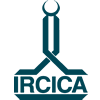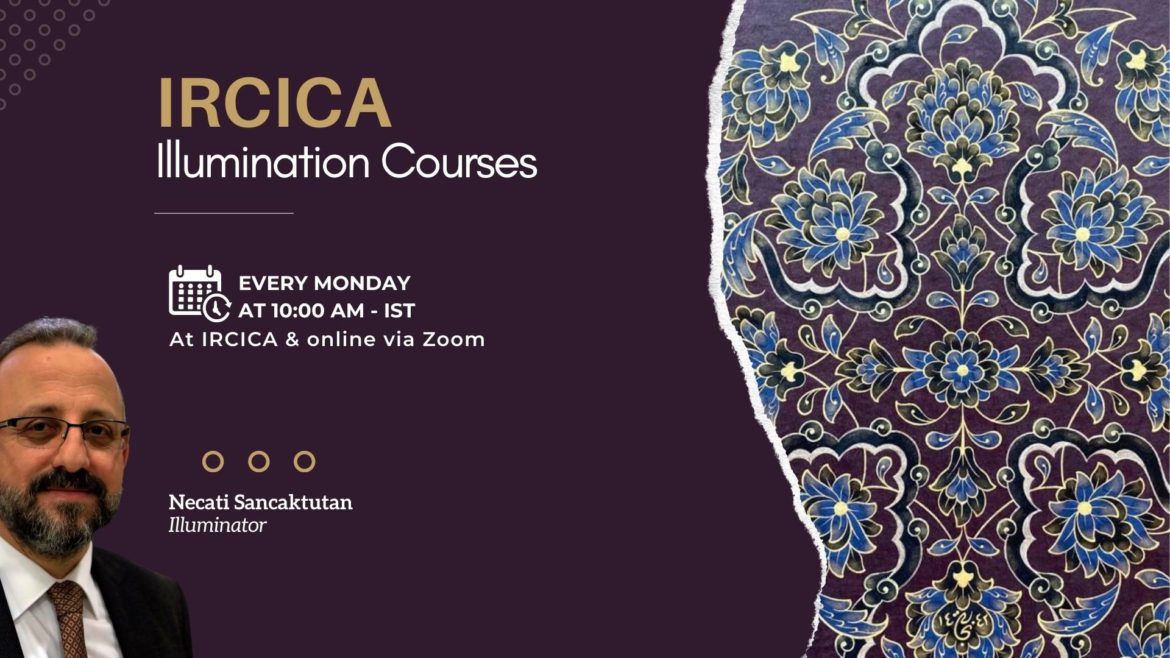Illumination (tezhib) is a decorative art applied on paper and various surfaces by using natural and synthetic paints, gold wash of different carats and colors, and ink, and with thin brushes. An illuminated work is described as muzehheb and the illuminator is called the muzehhib/muzehhibe. Illumination generally accompanies and decorates works of calligraphy. It was transmitted from teacher to pupil in the traditional way and acquired added significance in Islamic culture due to the respected status attached to the book, owing to the Holy Qur’an. A manuscript book would contain illuminated areas and elements, including the front endpaper, frontispiece, chapter headings, rosettes, markers, and back endpaper. Works of illuminations are found not only in books but also as part of other manuscript and artistic works, such as calligraphy panels, hilyas (calligraphic portraits of the Prophet saw), qitas (rectangular calligraphic compositions), muraqqas (albums), firmans (decrees) and tughras (monograms). In our time, illumination is a panel art rather than a book art. There are different types of illumination motifs, such as hatayī, rumī, bulut (cloud), munhanī (curve), etc.; different motifs can be combined in a single piece of work as long as they are not aligned with each other. Various techniques, such as plain illumination, halkāri (shading with dissolved gold), tarama (sweeping), çifttahrir (double outlining), zerefşan (gold sprinkling) and zerenderzer (gold-on-gold) are applied to produce the different parts and elements of a composition. The art of illumination constantly evolved during the Herat, Ilkhanid, Mamluk, Timurid, Safavid, Seljukid and Ottoman periods; it was enriched with changes of materials, colors, uses of gold, motifs and techniques. In recent history, it was perfected with the contributions of artists such as Abdullah Shīrāzī, Baba Nakkaş, Şahkulu, Karamemi, Ali Ūskūdarī, İsmail Hakkı Altunbezer, Rikkat Kunt and Muhsin Demironat; today, it continues to be practiced by a growing number of artists throughout the world.
Necati Sancaktutan
Born in Istanbul in 1965, Sancaktutan graduated from Marmara University, Department of Traditional Turkish Handicrafts, Division of Illumination & Miniature Arts with first degree, in 1994. He obtained his MA from the same university, with his thesis titled “Study of a Mushaf from the Safavid Period from the Viewpoint of Illumination”. After graduation, he continued his training under the instruction of Prof. Dr. Çiçek Derman and received his İjaza in illumination. He pursues doctorate studies at Marmara University, with a dissertation on “Illumination Art during the Reign of Murad III”. Sancaktutan taught at the Institute of Islamic Arts and Architecture of al-Balqa’ Applied University, Jordan, from 2001-2008, where he was conferred the title of “Assistant Prof., Master Artist”. He gave illumination courses at various institutions, including the Altunizade Culture and Arts Centre attached to Üsküdar Municipality, the Waqf for Classical Turkish Arts, the Bağlarbaşı Center for Turkish-Islamic Arts and Fatih Sultan Mehmet Waqf University, and served as Jury member at Al Burda Award organized by the Ministry of Culture and Youth of the United Arab Emirates; currently, he is Jury member for the illumination section of the competition organized by the Fujairah Fine Arts Academy. Necati Sancaktutan participates in local and international exhibitions, conducts workshops and seminars, and currently works as Advisor at the Presidency of the Republic of Türkiye.
All episodes are available on our Youtube channel.





